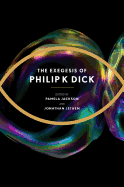
In early 1974, science fiction author Philip K. Dick went through a series of hallucinatory experiences that he spent the next eight years of his life trying to understand. Some of his tentative answers appeared in subsequent novels, beginning with Valis (1981), but the real analysis was contained in the "Exegesis," thousands of pages of handwritten and typed notes. A small portion of this material was published in 1991; this new Exegesis is significantly larger, but still comprises only about one-tenth of the available content.
To the uninitiated, Dick's experiences in and of themselves may seem bizarre, and his theoretical frameworks for those experiences increasingly baroque. In the theory most fans have heard, Dick became convinced that the world of 1974 was a holographic illusion, that it was really 70 A.D., and that he had been contacted by either the Holy Spirit or Sophia, the Gnostic embodiment of divine wisdom, and alerted to the presence of an underground Christian movement dedicated to overthrowing the false world. The Exegesis has even weirder hypotheses; Dick frequently became enamored of whatever idea he'd most recently uncovered in his research and reconceptualized his entire experience around it.
Jackson and Lethem primarily serve as invisible guides through the Exegesis; they've made hard choices about what to include from the vast material. The most interesting commentary comes from the experts who've read through the material, including the philosopher Simon Critchley, religious historians Erik Davis and Jeffrey J. Kripal and the novelist Steve Erickson. These annotations help us to see the Exegesis as an assertion of creative identity. Why would some form of higher intelligence reach out to a struggling science fiction writer in Southern California in 1974? Because, as Erickson explains, Philip K. Dick, like any creative artist, needed to believe he mattered. --Ron Hogan, founder of Beatrice.com

